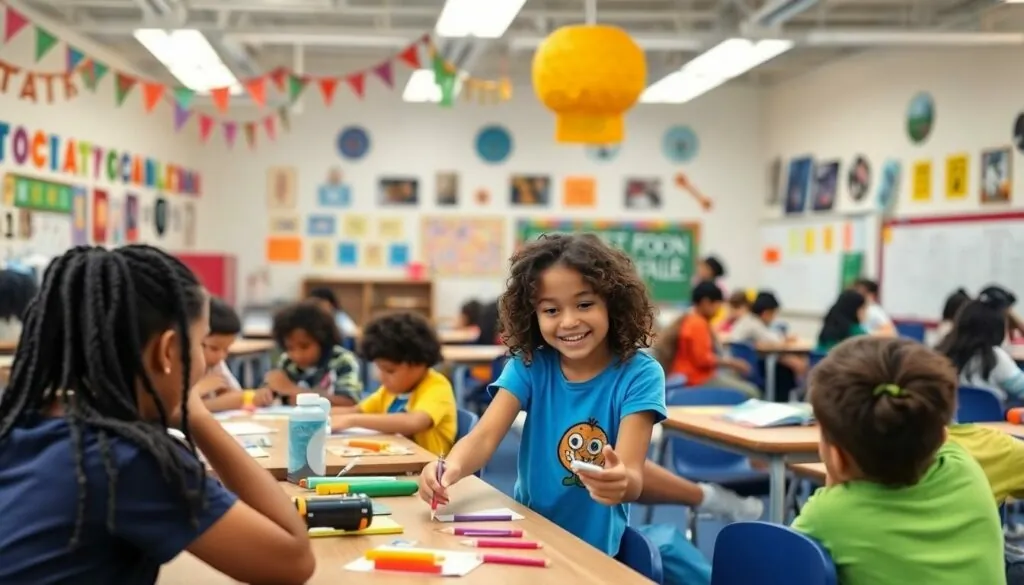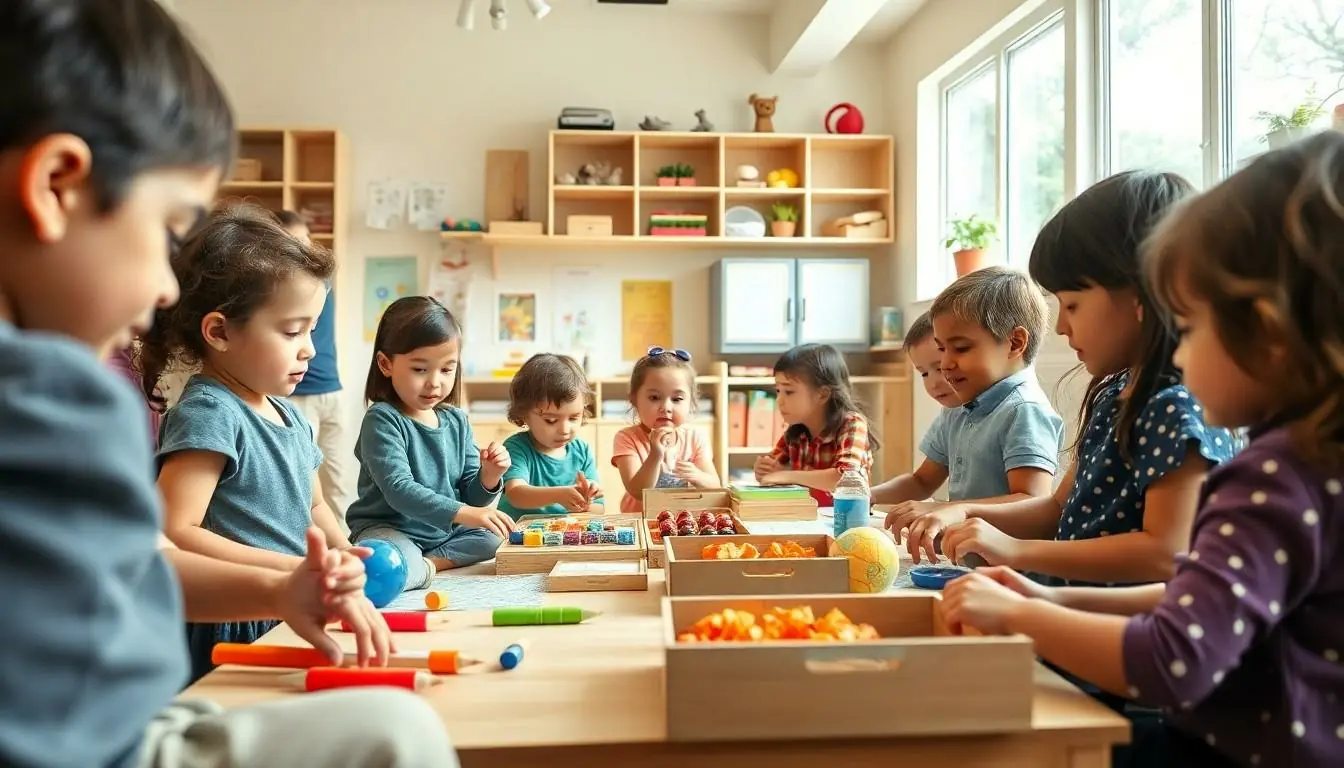Traditional education isn’t always a perfect fit for every student. Alternative schools offer a different approach to learning that breaks free from conventional classroom settings. These specialized institutions cater to students who may need a more flexible or personalized educational environment to thrive.
From Montessori methods to project-based learning programs alternative schools embrace diverse teaching philosophies and learning styles. They’re designed to support students who might struggle in traditional settings or simply prefer a different educational path. Whether it’s due to learning differences social challenges or a desire for more creative expression these schools provide options that can transform a student’s academic journey.
Table of Contents
ToggleUnderstanding Alternative Schools and Their Purpose
Alternative schools provide specialized educational environments designed to address unique learning needs through customized teaching methods. These institutions operate outside traditional educational frameworks while maintaining academic standards.
Key Differences From Traditional Schools
Alternative schools feature smaller class sizes with 15 or fewer students per teacher. The curriculum incorporates individualized learning plans tailored to each student’s pace abilities. Teachers use flexible assessment methods beyond standardized testing, such as portfolios projects demonstrations. The physical environment differs from typical classrooms, offering open spaces learning zones collaborative areas. Students participate actively in decision-making processes regarding their education schedule course selection learning goals. Alternative schools maintain extended operating hours including evening weekend programs to accommodate diverse student schedules.
Educational Philosophy and Approaches
Alternative schools embrace diverse teaching philosophies focused on experiential learning student autonomy. Montessori methods emphasize hands-on exploration self-directed activities natural skill development. Project-based learning connects academic concepts to real-world applications through collaborative research initiatives. Democratic education models involve students in governance curriculum planning community decisions. Waldorf education integrates arts movement practical skills throughout academic subjects. Teaching approaches incorporate multiple intelligence theory recognizing varied learning styles cognitive strengths. Students engage in peer mentoring cross-age learning interdisciplinary studies that connect subject areas naturally.
| Teaching Philosophy | Key Elements | Student-Teacher Ratio |
|---|---|---|
| Montessori | Self-directed learning, Mixed age groups | 1:10 |
| Project-Based | Real-world applications, Collaborative work | 1:12 |
| Democratic | Student governance, Community involvement | 1:15 |
| Waldorf | Arts integration, Holistic development | 1:12 |
Types of Alternative School Programs
Alternative education encompasses several distinct approaches that cater to different learning philosophies and student needs. Each program type offers unique methodologies and environments designed to foster academic growth and personal development.
Montessori Schools
Montessori schools operate on a child-centered educational approach developed by Dr. Maria Montessori. Students work at their own pace in multi-age classrooms equipped with specialized learning materials. Teachers act as guides who observe each child’s progress and provide individualized support. The classroom environment features purposefully arranged activity areas for practical life skills, sensorial exploration, mathematics, language arts and cultural studies. Students choose their daily activities while developing independence, concentration and self-discipline through hands-on learning experiences.
Waldorf Education
Waldorf schools integrate artistic expression with academic learning through a developmentally appropriate curriculum. Students engage in movement, music, painting and handwork alongside core subjects like mathematics and literature. Teachers remain with the same class for multiple years to build strong relationships and understand each student’s growth. The curriculum emphasizes imagination in early years, analytical thinking in middle grades and ethical reasoning in high school. Natural materials and limited technology create an environment focused on experiential learning and creative development.
Democratic Schools
Democratic schools empower students as active participants in their education through shared decision-making processes. Students and staff members receive equal votes in school meetings that determine rules, policies and educational offerings. Learning happens through self-directed activities, with students choosing their daily schedule from available classes, independent studies and projects. The environment promotes responsibility, critical thinking and civic engagement through authentic participation in school governance. Students develop intrinsic motivation by pursuing their interests while meeting academic requirements through documentation of their learning experiences.
Benefits of Alternative Education
Alternative education provides unique advantages that address the limitations of traditional schooling systems. These benefits enhance both academic performance and personal development.
Personalized Learning Experience
Alternative schools customize education to match each student’s learning style through individualized learning plans. Students progress at their own pace in subjects like math reading or science based on their abilities rather than age-based grade levels. Teachers adapt instructional methods to accommodate visual auditory or kinesthetic learning preferences. Class sizes averaging 12-15 students enable educators to provide targeted support and meaningful feedback. The flexible curriculum incorporates student interests allowing them to explore topics through hands-on projects research assignments or creative expression.
Focus on Student Well-being
Alternative schools prioritize emotional social and physical wellness alongside academic achievement. Students participate in daily mindfulness practices meditation or movement activities to manage stress and enhance focus. The supportive environment includes dedicated counseling services peer mentoring programs and conflict resolution training. Teachers establish strong relationships with students through regular one-on-one meetings and family conferences. The emphasis on community building creates safe spaces where students feel comfortable expressing themselves taking risks and developing authentic connections with peers.
Key Features of Alternative Schools
Alternative schools incorporate distinctive characteristics that set them apart from traditional educational institutions. These features create environments conducive to personalized learning experiences tailored to individual student needs.
Flexible Curriculum
Alternative schools implement adaptable learning frameworks that accommodate diverse student interests and abilities. The curriculum integrates core academic subjects with experiential activities such as art projects, environmental studies, or community service initiatives. Teachers modify lesson plans based on student progress, incorporating multimedia resources, hands-on experiments, or group discussions. Students explore subjects at their own pace, selecting projects that align with their interests while meeting academic standards. Assessment methods include portfolios, presentations, project demonstrations, or student-led conferences instead of traditional testing.
Small Class Sizes
Alternative schools maintain class sizes of 12-15 students per teacher to ensure individualized attention. This ratio enables teachers to identify each student’s learning style, strengths, and areas for improvement. Students receive immediate feedback on assignments, participate actively in discussions, and engage in collaborative projects. Teachers track individual progress through detailed observation, documentation, and regular communication with students and parents. The intimate learning environment fosters strong relationships between educators and students, creating supportive spaces where students feel comfortable expressing ideas and asking questions.
Choosing the Right Alternative School
Selecting an alternative school requires careful evaluation of educational philosophies, teaching methods, and program structures. The decision impacts a student’s academic journey, social development, and future opportunities.
Questions to Consider
- What specific learning challenges does the student face in traditional settings?
- How does the school’s teaching philosophy align with the student’s learning style?
- What qualifications do teachers possess in specialized teaching methods?
- Does the school maintain accreditation from recognized educational bodies?
- What success metrics demonstrate student achievement?
- How does the school integrate technology into learning?
- What extracurricular activities support whole-child development?
- What resources exist for students needing additional support?
- How does the school communicate student progress?
- What are the costs associated with enrollment tuition fees transportation?
Evaluating School Fit
Alternative schools demonstrate effectiveness through specific performance indicators. Academic achievement rates track student progress in core subjects. Graduation rates average 85% in established alternative programs. Student engagement metrics reveal participation levels in classroom activities. Parent satisfaction surveys indicate 90% approval ratings for personalized learning approaches.
| Performance Indicator | Average Rate |
|---|---|
| Graduation Rate | 85% |
| Parent Satisfaction | 90% |
| Student Retention | 88% |
| College Acceptance | 82% |
Teachers maintain specialized certifications in alternative education methods. Class sizes remain capped at 15 students to ensure individualized attention. Programs integrate regular assessments through portfolios presentations projects. Campus facilities feature dedicated spaces for hands-on learning specialized instruction supportive services.
Conclusion
Alternative schools represent a powerful shift in education offering hope for students who need something different from traditional schooling. These institutions prove that education doesn’t have to follow a one-size-fits-all approach to be effective.
With their focus on individualized learning flexible curricula and supportive environments alternative schools continue to transform the educational landscape. The high graduation rates and parent satisfaction levels demonstrate that these innovative approaches work.
For families seeking an educational path that embraces their child’s unique learning style alternative schools stand ready to provide a meaningful and successful academic journey. They’re not just an alternative – they’re often the best choice for helping students reach their full potential.






